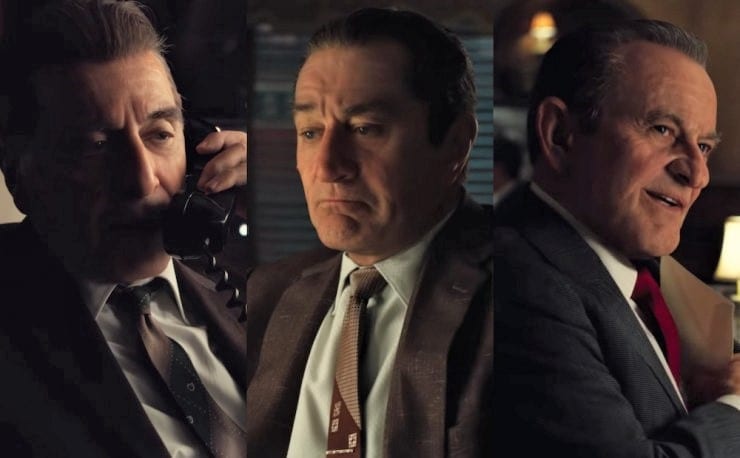After the release of Alfonso Cuarón’s Best Picture contender Roma last year, Netflix has proved itself to be a serious contender for film distribution, if not controversial with more traditional cinephiles due to the streaming giant’s tendency to avoid movie theaters all together. Now, it’s Martin Scorsese’s turn to throw his hat into the home-media ring with his latest film, The Irishman, and with an increased budget of $200 million for visual effects technology, it’s not only costing Netflix a pretty penny, but marks Scorsese’s most expensive film to date.
In his latest foray into a Scorsese crime flick, Robert De Niro plays Frank Sheeran, a hitman who recalls his involvement in the disappearance and potential murder of American labour union leader, Jimmy Hoffa (Al Pacino) as well as his relationship with the mafia. Starring alongside them as mob boss Russell Bufalino is Joe Pesci, coaxed out of his informal retirement and reunited with De Niro in a major acting role since his appearance in Scorsese’s 1995 film, Casino.
Not only is Scorsese championing the accessibility of the Netflix feature, in addition to limited theatre releases, The Irishman will act as a visual effects showcase that would give Benjamin Button a run for his money. The trailer tantalisingly teases us with snippets of an aged down De Niro until the very end, where we see a very convincing, subtly younger version of the veteran actor, in order to not lose immersion with having another actor play him. This is where the real meat of the film will be, with the VFX having ballooned the film’s budget from $125 million to $200 million by the time the film reached the editing room.

With three Academy Award winning actors renowned for starring in some of the most influential crime dramas in cinema all united in one film, with an ensemble cast featuring the likes of Harvey Keitel and Anna Paquin, it certainly smells like a winner.
The Irishman will premiere at the New York Film Festival in September, with the Netflix and limited theatre release coming in the final quarter of 2019.
Words by Jack Roberts
